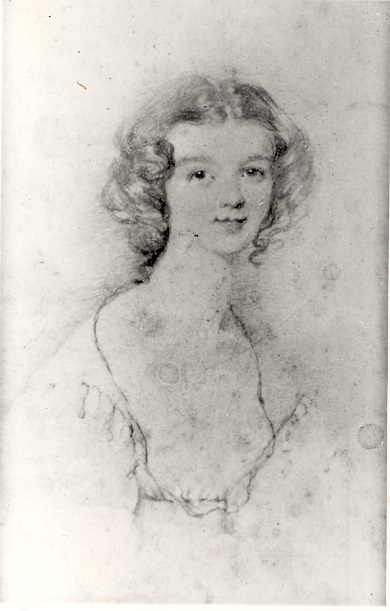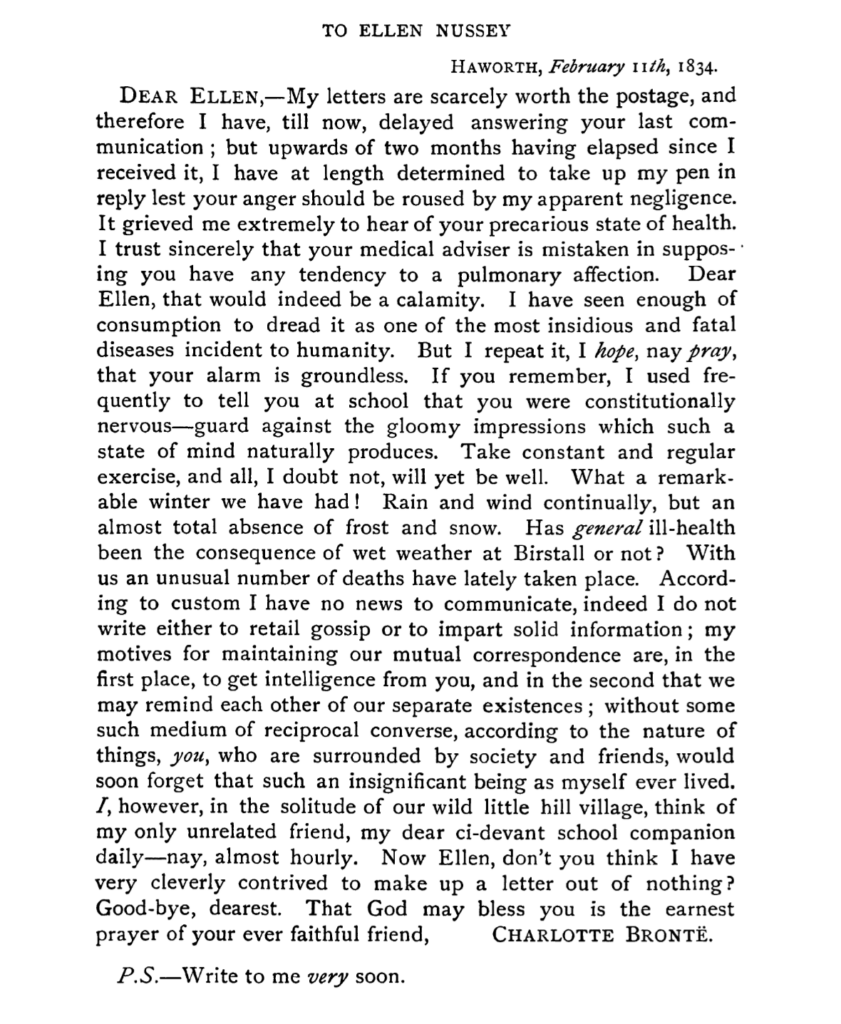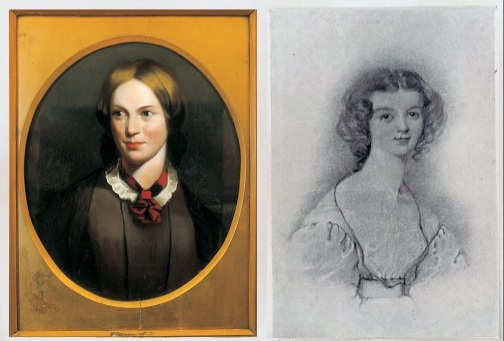Charlotte Brontë, like her sisters Emily and Anne Brontë, was a consummate writer. Writing came easily to her, and as readers of her novels will know, she was almost incapable of writing a dull or badly-phrased sentence. Unlike her sisters, we have a large number of letters from Charlotte Brontë that showcase her writing skills, as well as providing a remarkable look at life within the Brontë family. In today’s post we look at a letter Charlotte sent on this day 1834, a letter which she ‘made out of nothing’.

At the time of its composition Charlotte Brontë was seventeen years old, and this letter shows the maturing style of Charlotte between her juvenilia set in the imaginary kingdom of Angria and her mature masterpieces written in her thirties. The recipient was Ellen Nussey, a year (almost to the day) younger than Charlotte, and the great lifelong friend she had made at Miss Wooler’s school at Roe Head in Mirfield. It is a letter brimming with charm and youthful vigour, but with a tinge of characteristic melancholy too:

It is clear that Charlotte loved Ellen Nussey very much, a love that endured throughout her life. She thinks of her daily, ‘nay almost hourly’, and considers herself a small, insignificant thing when compared to beautiful Ellen surrounded by Birstall society. She has not written to her for two months, because she thinks she has nothing worth saying – this is a theme Charlotte will return to in letters to Ellen for years and decades to come. In one later letter, to Elizabeth Gaskell, she also explained that on occasion she receives a letter that she loves so much that she thinks she will answer it on the next day when she has time to reflect more fully and come up with an adequate response, but instead finds she has nothing to say and the letter goes unanswered.
We also receive an update from Charlotte on the weather in Haworth across that winter of 1833 to 1834. Contemporary records show that it was an unusually severe one, in which the West Riding of Yorkshire saw unprecedented levels of wind and rain, as well as, on New Year’s Eve, ‘one of the most tremendous hurricanes ever remembered.’

On the whole, it seems a cheery letter, but we read that Charlotte is concerned about Ellen’s health – and especially about the threat of consumption (what we now call tuberculosis): ‘I have seen enough of Consumption to dread it as one of the most insidious, and fatal diseases incident to humanity.’
Nine years earlier, a young Charlotte had seen her elder sisters Maria and Elizabeth carried away by this terrible disease, but she could little have guessed that in the succeeding decade it would claim the lives of her three surviving siblings too. It is another recurring theme in Charlotte’s letters to Ellen Nussey; she is often concerned about Ellen’s health and constitution, but whilst Charlotte died in her late thirties Ellen Nussey lived into her ninth decade. Charlotte Brontë has indeed cleverly contrived to make a letter out of nothing, but the hundreds of letters of such nothingness add up to an invaluable record of the life and times of the Brontë family.
I hope to see you next Sunday for another new Brontë blog post, and please do join me on Wednesday as well for a bonus post where we look once again at a Brontë Valentine’s Day.
